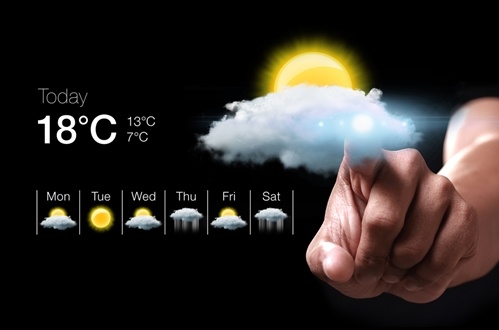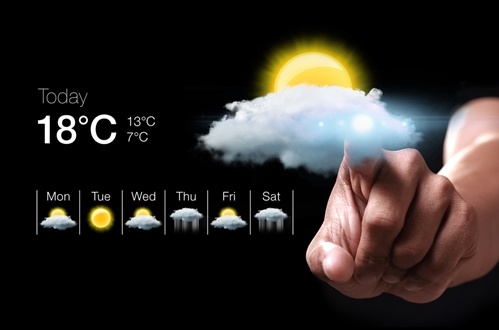
Supply chain logistics management relies on a great deal of data to create a complete vision of daily activities. Managers must have a complete overview of warehouse operations, suppliers, shipping partners or fleets and consumer feedback. When planning supply chain procedures, organizations must also take numerous factors outside business operations into account.
The weather can have a tremendous impact on supply chain performance. Bad weather can halt shipping projects, while good weather can increase consumer demand. When planning distribution and manufacturing, companies need solutions in place to anticipate and prepare for external environmental concerns.
Integrate Weather Data
If a company manufacturers winter wear, it probably needs to know how much snow the weather service predicts in the coming months. All distribution facilities must look out for any major storms that could close roads or cancel flights. Weather projections are important datasets for most businesses, but not every organization utilizes the available information.
The Met Office, A U.K. weather forecasting service, compiled a survey of supply chain officials for food retailers and suppliers to see how companies prioritized weather data. The research found about a third of respondents said they did not use any weather data when creating production and distribution plans.
Of the supply chain officials who said they used weather service data to prepare supply chains, the majority reported better sales forecast accuracy and product availability. Including seasonal factors like rain, snow and temperature into other consumer metrics allowed companies to improve anticipation of demand. Looking out for severe weather warnings helps prepare backup plans for distribution procedures.
Create Seasonal Information
The weather service isn’t always right. While using a top-notch meteorological service is a good starting point for weather data, companies should compare projections to internal history.
Supply chains should use data collection solutions to create consistent records for certain seasons. Automated performance is even better because it ensures chronicling is simple and prevents information from going missing or unreported. If managers provide employees with mobile automated data collection devices, sales, distribution and production activities are all visible in a central system.
Companies can compare any dataset to weather information from that time period to see how the information correlates. Supply Chain 24/7 suggested performing procurement exercises at the same time each year to create a sample of how operations function in similar climates.
Prioritize Flexible Solutions
No matter how good records are, weather is famously unpredictable. Weather service information and historical datasets help create anticipation, but companies need quick responses to changing weather patterns.
Automated data collection procedures provide companies with flexible supply chain solutions. The speed and convenience of mobile devices ensure companies consistently receive feedback on daily activities. If the weather service predicts a storm, every employee utilizing the same software system can see what plans the business makes to avoid obstacles.
Companies need to find supply and distribution partners with the same degree of flexibility. Manufacturing.net advised companies to work with vendors that also prioritize data and communication. When beginning a relationship with suppliers, organizations should work with their partners to create contingencies for major weather events.
Communication is Key
If bad weather drops seasonal demands for products like summer clothing or barbeque supplies, companies need to communicate a decreased need for materials to vendors. Automated data collection solutions provide quick results, but companies need to make sure the information gets communicated to the right people.
The Harvard Business Review said many organizations have a bad habit of turning inward during huge weather events. Warehouse management supervisors sometimes focus on making sure their facility is in order before providing data for other branches of the business. This is a problem because cooperation is important for surviving setbacks. Separate divisions and locations need to pool resources and share information.
Making communication and centralized information standard business practices provide employees with routines easy to continue through any event. If employees have mobile data collection devices they are familiar with, they should have no problem using them to report activities in rain and shine.






